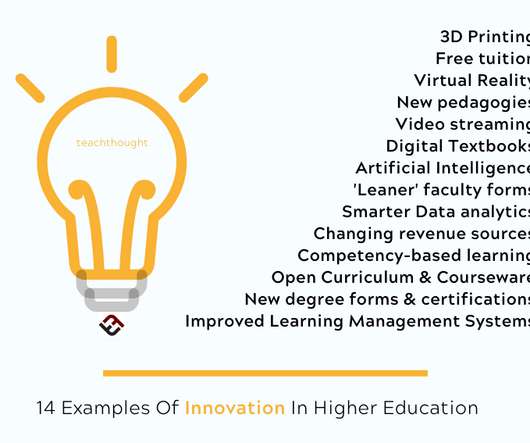Why Continuing Education Programs Are Poised to Become Hubs of Innovation
Edsurge
AUGUST 30, 2016
In particular, continuing education programs are less regulated, more responsive to industry and consumer needs, have less restrictive budget policies and procurement systems, operate under lower political pressure, and are often infused with the “startup mentality” that is critical for responding to and pioneering disruptive innovations.
















Let's personalize your content